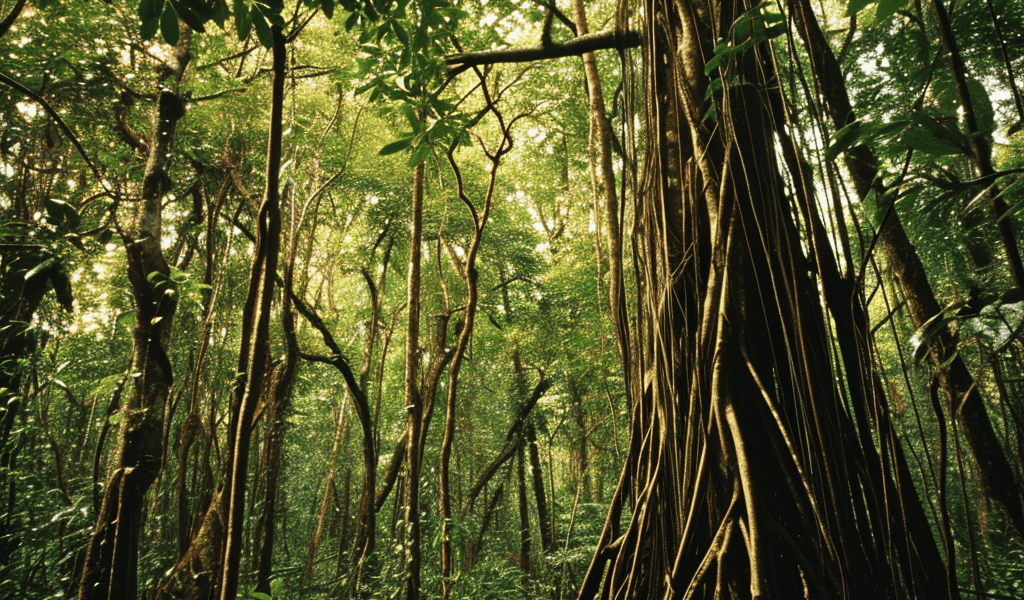Global Research Finds Warmer Temperatures Driving Woody Vines to Take Over World’s Forests
As Earth records its hottest year ever, a global research collaboration has found warmer temperatures are a key driver in woody vines taking over the world’s forests—threatening their vital role in helping cool the atmosphere by storing carbon.
Spanning 44 countries across five continents, the University of the Sunshine Coast-led study, published in Global Change Biology has identified which of the world’s forests are most vulnerable, based on their climate.
The identified hotspots are tropical forests at low elevation, examples of which can be found in East Africa, Vietnam, Colombia, Australia’s Wet Tropics and many more locations across the world.
Professor Andy Marshall, from UniSC’s Forest Research Institute, said the team had confirmed a “tipping point” in conditions that led to the dominance of liana, a woody vine that chokes trees and prevents them from growing, as it climbs to reach the forest canopy.
That crucial juncture for forests already disturbed by logging, clearing and other impacts is when mean annual temperature above 27.8° Celsius, and rainfall is less than 1,614 mm.
“Woody vines are increasingly taking over the world’s forests. For the first time, we have a global assessment that confirms that forest disturbance and climatic factors are major drivers of liana dominance,” Professor Marshall said.
“These findings are essential for successfully restoring the world’s forests, allowing us to know where to concentrate our efforts for restoration, and future areas of concern, in a changing climate,” Professor Marshall said.
“Importantly, it identifies the environmental conditions under which liana vines are likely to out-compete trees and stall recovery in disturbed native forests worldwide,” Professor Marshall said.
“In Australia, the coastal and low-elevation forests of north Queensland are the most vulnerable—adding to the ongoing threat of deforestation which, in Queensland, is already greater than any other developed country,” he said.
“With warmer temperatures and ongoing disturbances from logging and clearing, those forests areas under threat from liana around the world are only going to increase,” Professor Marshall said.
Professor Marshall said the study was a culmination of more than 20 years of research and filled a critical gap in understanding the vine’s dominance on an international scale.
On my first ever expedition to a rainforest, in East Africa, in 1998, I noticed these vines





